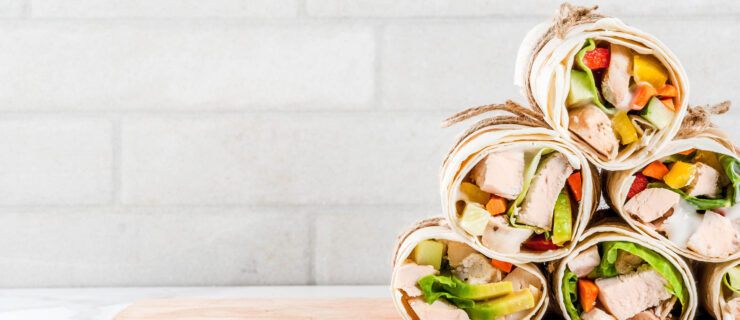Why Following The Low-Fat Diet Crazy May Do You More Harm Than Good
It’s no secret that fat is one of the most irresistibly delightful nutrients around. But as with all good things in life, excessive fat indulgence will ultimately widen your waistline and weaken your heart.
Fat: Friend or Foe?
For dancers, keeping body fat levels low can enhance appearance, stamina and efficiency. Unfortunately, the culture continues to support the image that “thin is in.” Adequate body fat, however, is crucial for promoting normal growth and development, shielding our bones and vital organs from injury and keeping us warm on a chilly day. If you find that you are frequently fatigued, constantly hungry or haven’t had your period for a while, then your body may need a jump start by adding a little fat to your meals.
Currently, health authorities recommend limiting fat intake to 20-35 percent of total daily calories. Most children, teenage girls, active women and sedentary men should consume about 2,000 calories a day while teenage boys and active men should aim for 2,800 calories a day. This translates to 45-75 grams of fat per day for individuals consuming 2,000 calories and 60-100 grams for those who need 2,800 calories.
Stop on Red, Go on Green
You now have a ballpark figure of how much fat to eat each day, but numerous research studies have shown that what really matters is the type of fat you eat. Instead of cutting back on all fats, health experts suggest that you aim to replace red-light fats (saturated fats and trans fats) with green-light fats (monounsaturated and omega-3 fats), while still enjoying the healthier fats in moderation. Keep in mind that you’re better off opting for the yellow-light fats than the red-light fats, but the green-light fats are the real winners. The following lists can help you make the right decisions.
Green-Light Fats
Monounsaturated Fats
What to eat:
olive, canola and peanut oil, natural peanut butter, nuts and seeds, especially almonds, pecans, cashews and peanuts; avocados, olives, dried fruit, cereal, pretzels.
Polyunsaturated Fats, Omega-3’s
What to eat: fatty fish such as bluefin or albacore tuna, salmon, mackerel, sardines, herring and lake trout, canola oil, ground flaxseed and flaxseed oil (add to oil-based salad dressings), wheat germ (add to hot or cold cereal, or salad), soy-based foods, leafy green vegetables.
Yellow-Light Fats
Polyunsaturated Fats, Omega-6’s
What to eat: vegetable oils such as corn, sunflower, safflower, sesame and soybean, and the nuts or seeds that make these oils, beef (to moderate your omega-6 intake, choose cuts such as top round, bottom round, round tip, tenderloin, sirloin, center loin, and top loin), pork, poultry, eggs, flaxseed oil.
Cholesterol (found in animal products)
What to eat: eggs (use egg substitutes in recipes instead of whole eggs or use two egg whites in place of each whole egg), liver, meat, shellfish, full-fat dairy products, butter. Note: Dietary cholesterol is not quite as bad as saturated fat for your blood cholesterol levels, but still aim for less than 300 mg of cholesterol per day by consuming a maximum of four whole eggs per week, using low fat milk and yogurt, and choosing lower-fat cuts of beef and pork such as those mentioned above in the omega-6 category of polyunsaturated fats.
Red-Light Fats
Saturated Fats
What not to eat: fatty cuts of beef, pork and lamb; whole milk, cream, butter and cheese; coconut, palm and palm kernel oil. Tips: Trim the fat from beef and pork, and remove the skin from poultry after baking. Instead of frying, grill, bake, broil, roast and stir-fry meats. When cooking, use lemon, orange or tomato juice, wine, low sodium chicken or beef broth and herbs or spices in place of butter or margarine.
Trans Fats
What not to eat:
deep-fried foods, including French fries, chicken fingers, cakes, cookies, doughnuts, pastry, crackers, margarine, imitation cheese, nondairy creamers and salad dressings. Tips: The closer the term “partially hydrogenated oils” is to the beginning of an ingredients list, the more trans fat the product contains. If you can’t do without margarine, choose the liquid or tub versions instead of the hard stick kind. Note: Since trans fats have been found to be so unhealthy for us, as of January 1, 2006, all Nutrition Facts statements will be required to list trans fats if the product contains 0.5 grams or more per serving.



